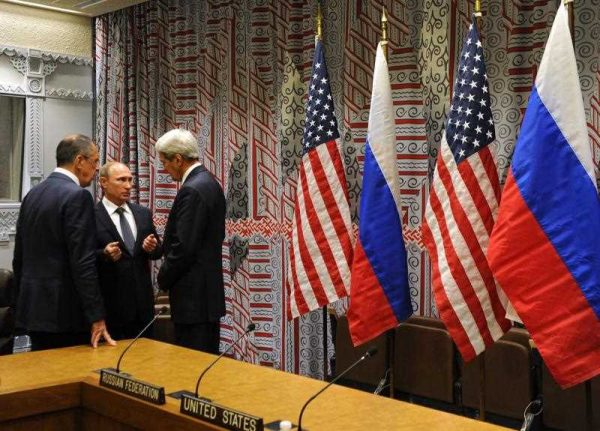First articulated by then-outgoing US Secretary of Defense Chuck Hagel in September 2014, the Third US Offset Strategy is aimed at addressing a perceived erosion of US conventional deterrence and technological dominance, caused by budget constraints, unceasing operations in the Middle East and the rapid proliferation of US defence technology to competitors.
As the ‘third’ offset strategy, it aims to emulate the achievements and logic of those implemented to deter the Soviet Union during the Cold War. In the first of these, the United States deployed nuclear weapons to offset Soviet conventional superiority in Europe. When parity in nuclear capabilities made this approach unviable, the second offset approach was developed to harness precision strike weapons and surface-to-surface ballistic missiles to compensate for Soviet conventional numerical superiority.
These strategies ultimately led to the Air Land battle strategy, whereby US land forces in Europe served as a trip-wire for North American forces, symbolising US commitment to European security.
While the Third Offset Strategy is notionally applicable to ‘worldwide threats’, including the Islamic State, the choice of a new strategy with European Cold War antecedents is probably no accident. In his most recent explication of the new strategy, US Deputy Defense Secretary Bob Work emphasised Russia as the focus, noting especially Russia’s own declaration of the United States and NATO as direct threats.
Where does this leave the Air Sea battle concept (ASB)? ASB was an operational concept originally designed to counter China’s advances in anti-access area-denial capabilities. These were best exemplified by China’s development of a so-called ‘carrier killing’ conventional ballistic missile, the DF-21. Given official blessing in 2010, the concept would employ advanced long-range and undersea weapons to ‘blind’ and ‘roll-back’ Chinese weapons.
Almost from the beginning there was a degree of discomfort about so obviously focussing on war with China. Consequently, the 2012 National Security Strategy rebadged ASB as the Joint Operational Access Concept and broadened its focus to other actors such as Iran. It was further criticised for its high cost, infeasibility, long timeframes and failure to explain how escalation — even to nuclear weapons — could be reliably avoided if attacks on key command and control targets on China’s mainland were undertaken.
But in the highly contested world of inter-service rivalry among US armed services, perhaps the most fatal flaw in ASB was its exclusion of a role for US land forces. It was reported in January 2015 that ASB would be undergoing a ‘major rethink’, in part prompted by contention surrounding the lack of a mission for the US Army in the original Air-Sea Battle. The omission led the land service to form its own Strategic Landpower Task Force in 2013 with the Marines and Special Operations Command.
Indeed in an obvious allusion to ASB, a senior US land forces general recently described the notion of war as a stand-off exercise in which long-range weapons vanquish the adversary as a ‘vampire’ fallacy, in that it never quite dies and always comes back.
If ASB is being diluted, and simultaneously eclipsed by the Third Offset Strategy, does this have implications for the US rebalance to the Asia Pacific? The answer is: none that will significantly undermine the goals of the rebalance. First, many of the technological innovation programs that ASB envisages are continuing, some under the auspices of the Third Offset Strategy.
Second, the rebalance is now much more than a purely military initiative. Despite its provenance as a defence planning exercise aimed at accommodating forces returning after forward deployment to the Middle East, it has now broadened considerably. Former secretary of state Hillary Clinton in particular realised that the United States needed to engage more both economically and politically in East Asia if it was to maintain its influence and connection within a region of increasing global economic and strategic weight.
Hence the rebalance now aims at building bilateral partnerships with former adversaries, including Vietnam and Myanmar, and ensuring America is not excluded from the region’s economic integration. This has produced the slightly-odd spectacle of current US Secretary of Defense Ash Carter enthusiastically touting the benefits of a trade deal, the Trans-Pacific Partnership.
Finally, there is the question of whether the rebalance has ever really been required. Arguably it has always been as much an exercise in communication as strategy. The rebalance intended to ensure that the United States’ Asian allies and partners did not view US economic difficulties following the global financial crisis as indications of a US decline or withdrawal from the Asia Pacific region.
But it might be argued that no sensible policymaker in an East Asian country has ever really believed that the United States has left the Asia Pacific, given the immense size of its forces resident there. While Russia may have leapt to greater prominence as amongst the threats currently occupying US defence planners, US conventional forces in Pacific Command’s domain will continue to play a substantial deterrence and reassurance role, with or without a bespoke military strategy.
Greg Raymond is a research associate at the Strategic and Defence Studies Centre, Coral Bell School of International Affairs, The Australian National University. He was formerly Director Strategic Policy in the Australian Department of Defence 2009-2012.

